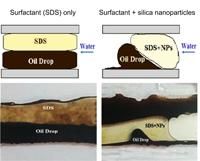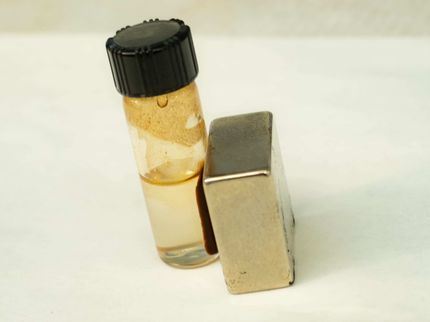A new application for enhanced oil recovery
Advertisement
A new class of materials which are suitable agents for oil displacing in Enhanced oil recovery have been developed by scientists in the Energy Safety Research Institute (ESRI) at Swansea University and scientists at Islamic Azad University in Iran.

Differences of the movement of oil through the micro channels of the addition of surfactant in the presence of silica nanoparticles as compared to the surfactant alone showing how the nano-sand alters the extraction of the oil. An effective formula for EOR applications, according to the scientists at Swansea University.
Goshtasp Cheraghian /Azad University/Iran
The new nanoparticle-surfactant complexes, composed of sodium dodecyl sulfate (SDS) surfactant and fumed silica nanoparticles (Si-NPs) have important applications in enhanced oil recovery (EOR). The materials are shown to improve the oil recovery by 58% compared to 45% recovery in the presence of surfactant alone.
Fabrication and testing of these materials were carried out by Goshtasp Cheraghian (Member of Young Researchers at Azad University) and Sajad Kiani, (a PhD student at the Energy Safety Research Institute at the Swansea University Bay Campus).
There, they used a 5-spot glass micromodel to evaluate the suitable agents for oil displacing in EOR. Such micromodel experiments have been used to investigate the mechanism of the fluid flow on porous mediums via flow visualization, pore space geometry, topology and heterogeneity effects, which are not possible to assess using traditional core-flood experiments.
"It is a surprise that the addition of silica nanoparticles, essentially nano-sand, to the surfactant solution leads to such a large ?ow modi?cation," said Barron, "the changes are due to an alteration of the viscosity as well as effective wettability alteration, which effects the sweeping of the oil towards the recovery point."
The results of this work support an improved insight into the role of NPs and surfactants in enhanced oil recovery and future use in EOR formulations. Barron described the multinational team as "a great example of international collaboration across boarders aimed at developing new materials for minimizing the impact of oil production through maximizing recovery."
































































